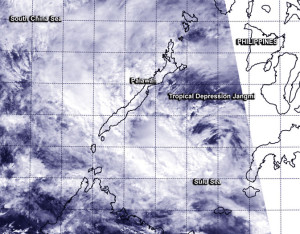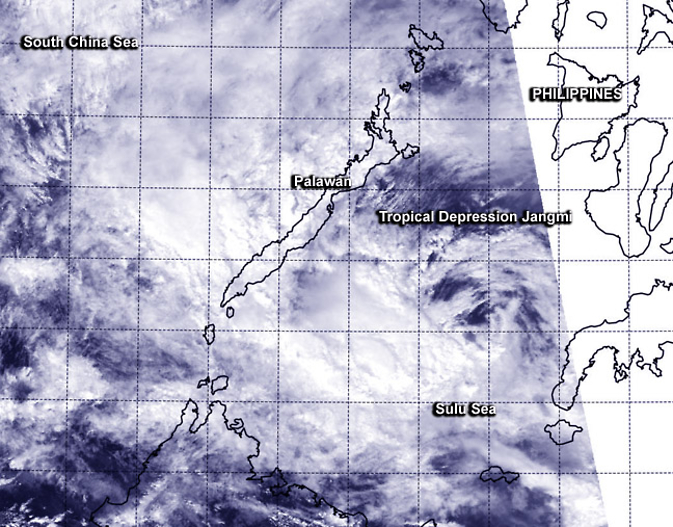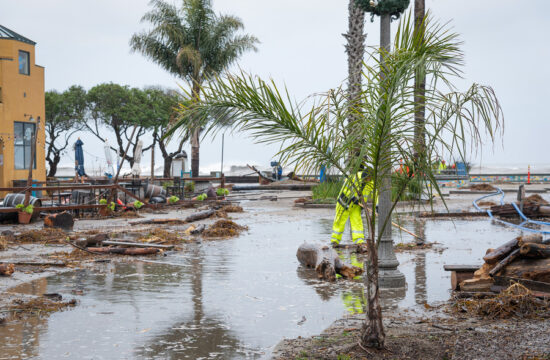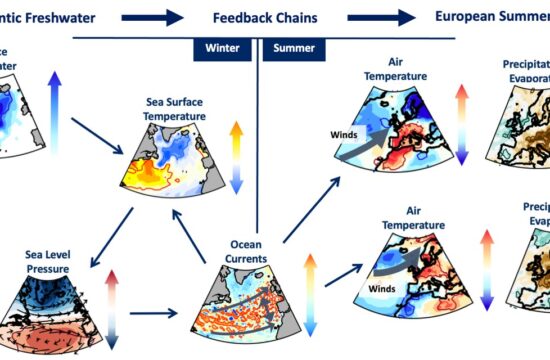
In the Sulu Sea of Tropical Depression Jangmi, came strong southeasterly vertical wind shear and the image of the storm got captured by NASA-NOAA’s Suomi NPP satellite on Dec. 31.
After crossing southern and central Philippines, Jangmi encountered moderate to strong wind shear on Dec. 31. Jangmi had moved into the Sulu Sea, which is located just west of the Visayas and Mindanao regions of Philippines. Jangmi’s center never made it to the island of Palawan, which borders the Sulu Sea to the west. Palawan is an island province of the Philippines in the Mimaropa Region.
NASA-NOAA’s Suomi NPP satellite passed over Tropical Depression Jangmi on Dec. 31 at 06:13 UTC (1:13 a.m. EST) and the Visible Infrared Imaging Radiometer Suite (VIIRS) instrument image revealed the effects of wind shear. The VIIRS image showed that the north, northeastern and eastern quadrants of the storm were almost devoid of clouds and showers, as they were being pushed to the northwest and west of the center. Those thunderstorms northwest of the center were weakening. Some of the thunderstorms were being pushed to the northwest and over the island of Palawan.
At 0300 UTC on Dec. 31 (10 p.m. EST on Dec. 30), the Joint Typhoon Warning Center (JTWC) issued their final bulletin on the depression. At that time, Jangmi had maximum sustained winds near 25 knots (28.7 mph/46.3 kph) and was centered near 8.8 north latitude and 121.5 east longitude, or about 116 nautical miles (133.5 miles/214.8 km) north of Zamboanga, Philippines. Jangmi was moving to the south at 6 knots (6.9 mph/11.1 kph).
JTWC noted that upper-level analysis indicates the system has moved into a hostile environment with moderate to high southeasterly vertical wind shear. JTWC forecasters expect Jangmi to dissipate within a day.








